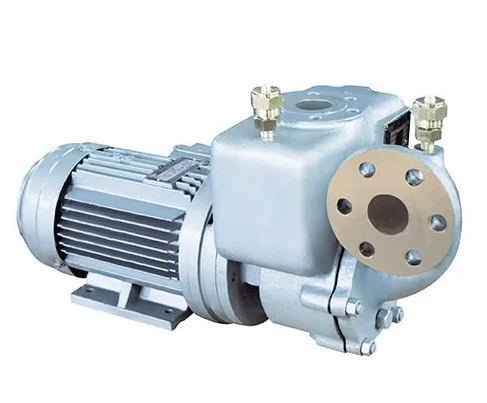Working principle of marine centrifugal pump
The working principle of marine centrifugal pumps is mainly based on the action of centrifugal force. Through the high-speed rotation of the motor, mechanical energy is converted into kinetic energy and potential energy of the transported liquid. The following is a detailed analysis of the working principle of marine centrifugal pumps:
1. Basic working principle
Energy conversion: The centrifugal pump converts the mechanical energy of the motor into kinetic energy and potential energy of the transported liquid.
Liquid suction: Before the centrifugal pump is started, the pump casing needs to be filled with the liquid to be transported. After starting, the impeller is driven by the shaft to rotate at high speed, and the liquid between the blades also rotates with it.
Liquid discharge: Under the action of centrifugal force, the liquid is thrown from the center of the impeller to the outer edge and gains energy, leaving the outer edge of the impeller at high speed and entering the volute pump casing. In the volute, the liquid slows down due to the gradual expansion of the flow channel, and part of the kinetic energy is converted into static pressure energy, and finally flows into the discharge pipe at a higher pressure and is delivered to the required place.
2. Key components and functions
Impeller: The impeller is the core part of the centrifugal pump, which has a high speed and a large output force. The blades on the impeller play a major role in driving the liquid to rotate and transferring energy to the liquid during the rotation process.
Pump casing: The pump casing, also known as the pump housing, is the main part of the water pump, which plays a supporting and fixing role and is connected to the bracket for mounting the bearing. There is a liquid suction port in the center of the pump casing that is connected to the suction pipe, through which the liquid enters the pump; the liquid discharge port on the pump casing is connected to the discharge pipe to discharge the pressurized liquid.
Pump shaft: The function of the pump shaft is to connect with the motor through the coupling and transmit the torque of the motor to the impeller. It is the main component for transmitting mechanical energy.
Bearing: The bearing sleeve supports the pump shaft, and there are two types: rolling bearings and sliding bearings. They ensure the smooth operation of the pump shaft.
Sealing ring: The sealing ring, also known as the leakage reduction ring, is installed at the junction of the inner edge of the pump casing and the outer aid of the impeller to reduce internal leakage, increase backflow resistance, and delay the service life of the impeller and the pump casing.
Stuffing box: The stuffing box is mainly composed of stuffing, water seal ring, stuffing cylinder, stuffing gland and water seal pipe. Its function is to close the gap between the pump casing and the pump shaft to prevent the water flow in the pump from leaking out and prevent external air from entering the pump.
3. Phenomena during the working process
Vacuum formation: When the liquid flows from the center of the impeller to the outer edge, a certain vacuum is formed in the center of the impeller. Since the pressure above the liquid surface of the storage tank is greater than the pressure at the pump inlet, the liquid is continuously pressed into the impeller.
Continuous suction and discharge: As long as the impeller keeps rotating, the liquid will be continuously sucked in and discharged. This continuous suction and discharge process enables the centrifugal pump to continuously provide the system with pressurized liquid.
4. Special phenomena and precautions
Air binding phenomenon: When there is air in the pump casing, the centrifugal force generated is also small because the density of air is much smaller than that of liquid. At this time, the pressure difference between the liquid surface of the storage tank and the pump suction port is not enough to pressurize the liquid in the storage tank into the pump, that is, the centrifugal pump has no self-priming ability, so that the centrifugal pump cannot transport liquid. This phenomenon is called "air binding phenomenon". To avoid the occurrence of air binding phenomenon, the centrifugal pump must ensure that the pump casing is full of liquid before starting.





